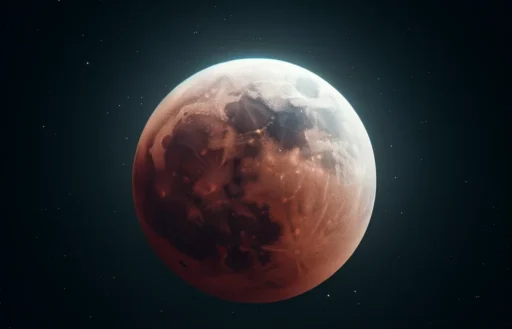
This year’s second lunar eclipse is set to occur on 18th September 2024. This event is a treat for stargazers and astronomy enthusiasts. This year’s first lunar eclipse occurred on 25th March 2024, which was a penumbral lunar eclipse. The second eclipse, set to take place on 18th September, is a partial lunar eclipse. The lunar eclipse will occur according to Indian Standard Time, starting at 6:11 a.m. and ending at 10:17 a.m. IST. The total duration of the eclipse will be 4 hours and 6 minutes. The slight dimming of the Moon will start at 06:11 AM, and the peak of the eclipse will be at 08:14 AM with only the top 8 per cent of the Moon in full shadow, finally, the Moon will finish exiting the full shadow at 10:17 AM.
This astronomical event also coincides with the time when the Moon is closest to the autumnal equinox, the first day of autumn, September 22. This full moon is known as the Harvest Moon. This September’s Harvest Moon is also a supermoon. Supermoons occur at perigee, which is a point in the Moon’s orbit where it is closest to Earth. At this point, the Moon appears larger and brighter than the average full moon. This harvest supermoon will not only shine with a striking brightness but also take on the distinctive reddish hue of a Blood Moon during this Lunar eclipse making this a visual delight to the skygazers.
This event will be visible in several places, including Europe, Western Asia, North America, Antarctica, Africa, South America, and southwestern Russia. Viewers in India, however, will not be able to witness this event as the Moon will be below the horizon during the eclipse.
A lunar eclipse occurs during the full moon phase when the Earth is positioned between the Moon and the Sun. When Earth’s shadow falls upon the Moon’s surface, it either completely covers the Moon with darkness or sometimes turns the surface a reddish colour over a few hours. There are three types of lunar eclipses: total lunar eclipse, partial lunar eclipse, and penumbral lunar eclipse. When Earth’s shadow completely covers the entire Moon’s surface, it is known as a total lunar eclipse. When Earth’s shadow falls only on part of the Moon, it is known as a partial lunar eclipse. A penumbral lunar eclipse occurs when the faint outer part of Earth’s shadow falls across the Moon’s surface.
The Super Harvest moon eclipse can be visible with the naked eye, but for a closer and clearer view of the Lunar surface, binoculars and telescopes can be used. In India, those who want to enjoy the celestial event can get real-time coverage of the event on various astronomical platforms and observatories that will be live-streaming online.
Discover more from Poniak Times
Subscribe to get the latest posts sent to your email.






